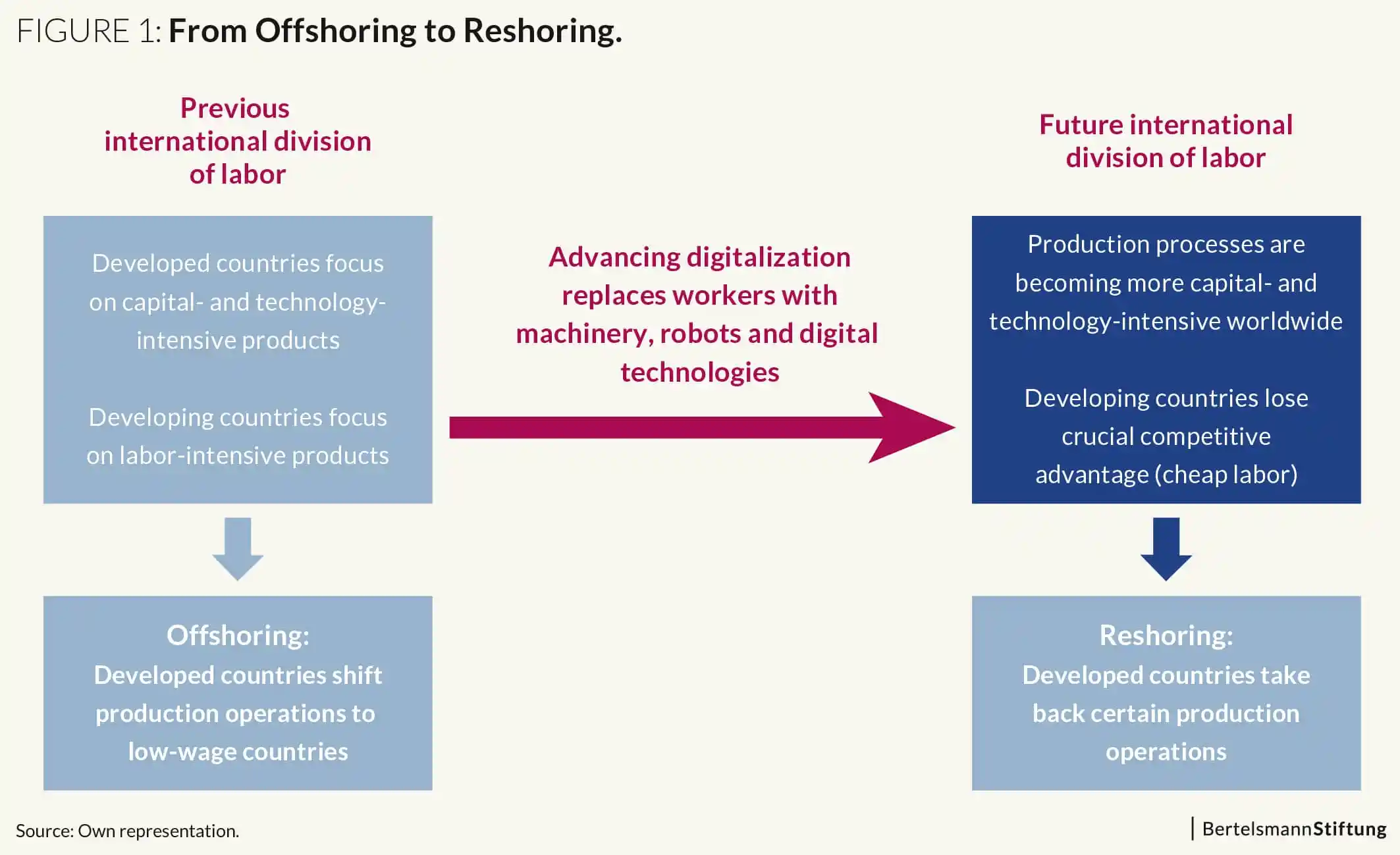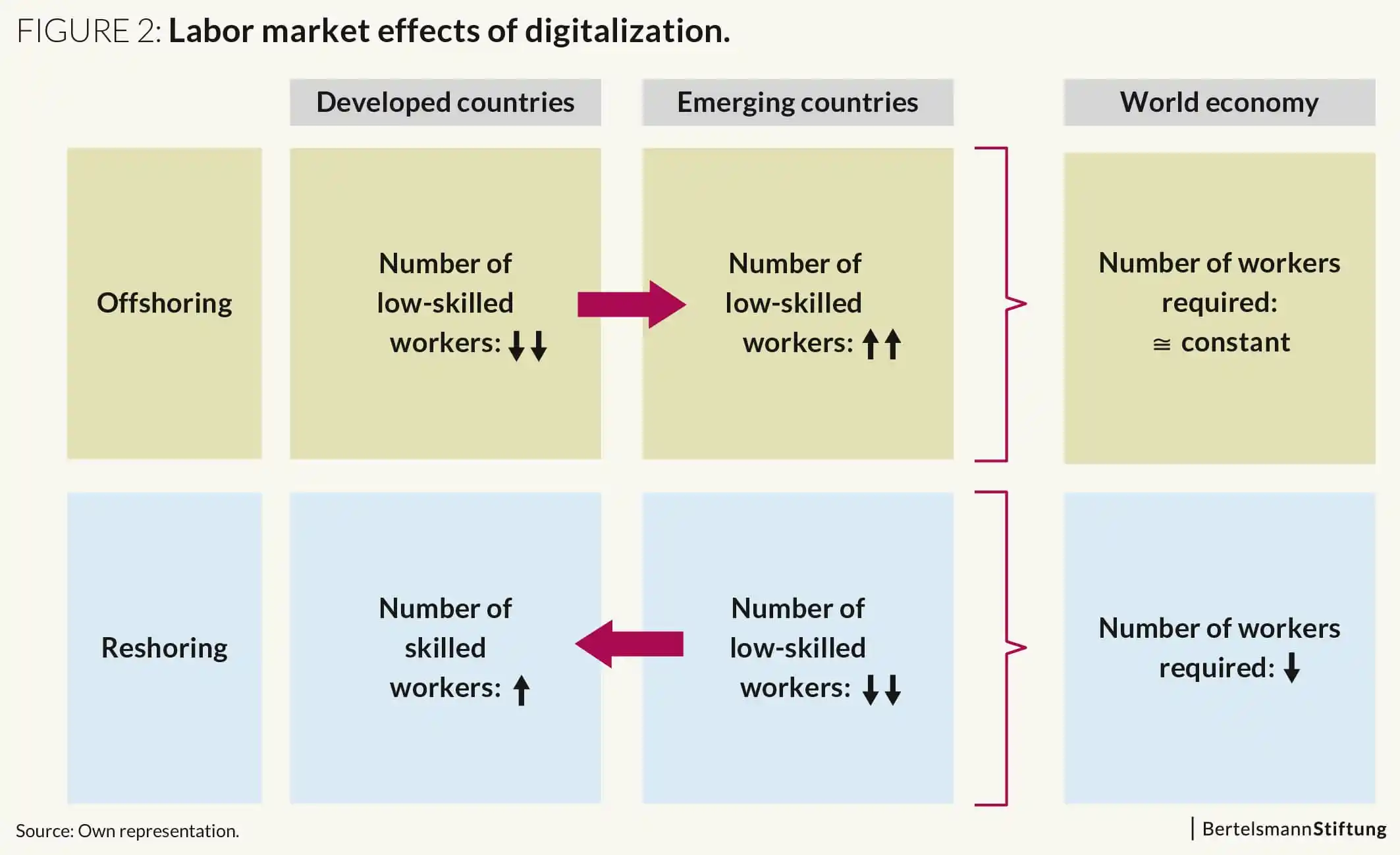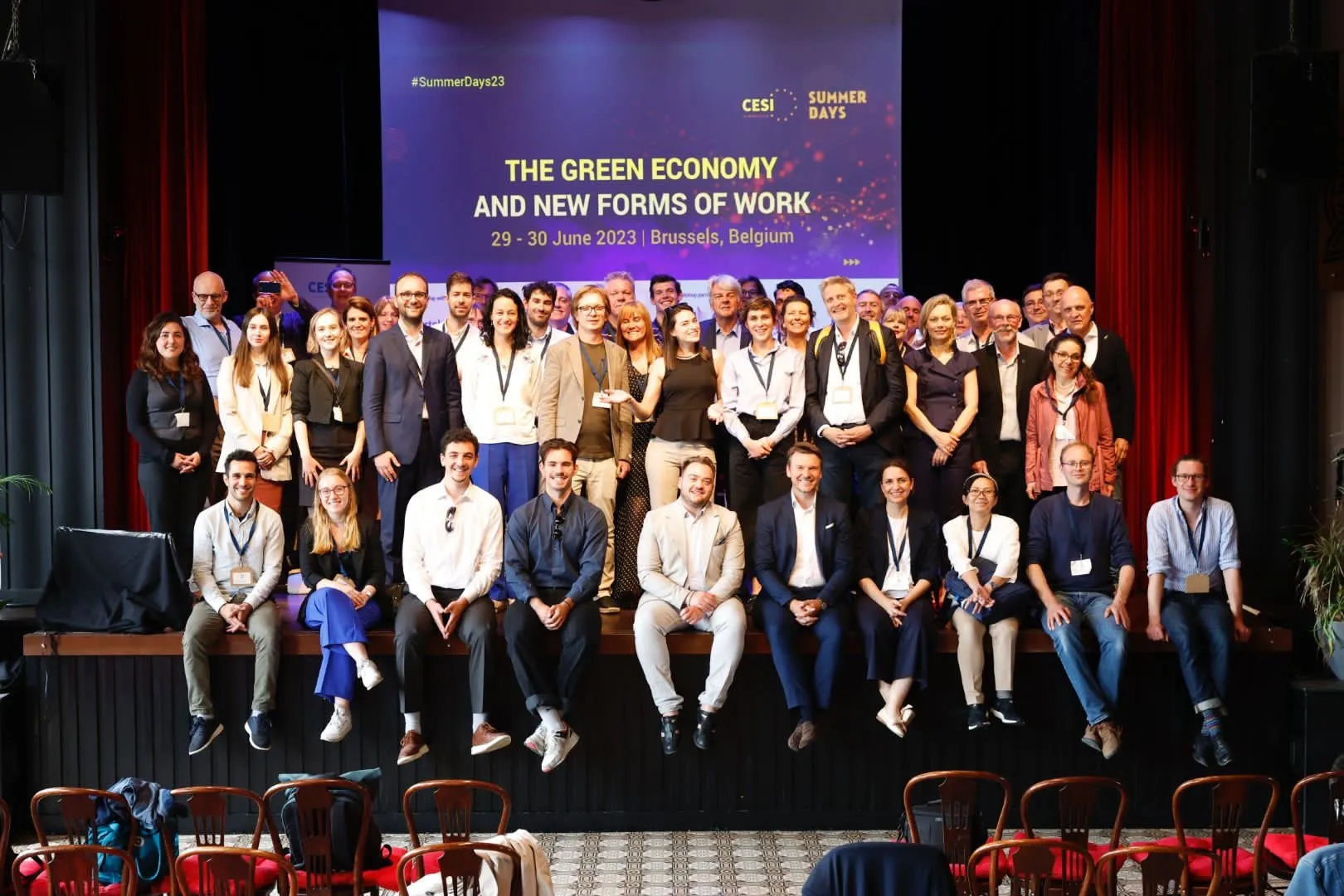
The technological progress of the last decades has led to developed countries relocating many work operations to low-wage countries. The increased use of digital technologies is now leading to a partial relocation of production sites back to the developed industrialized countries. However, the number and quality of the jobs is fundamentally different: While many low-skilled jobs left developed countries, only few high-skilled ones will return to the industrialized countries. The attempt to speed up the return of these jobs through punitive tariffs is not promising either.
Globalization and Offshoring
In the past, technological progress has significantly reduced communication and transport costs worldwide. This has driven the global division of labor:
- Production processes that require a lot of capital, modern technologies and a highly qualified workforce take place in developed countries such as the USA and Germany.
- By contrast, production processes that primarily require low-skilled workers are carried out in developing countries and, above all, in Asian emerging markets. The associated geographical relocation of work activities or even entire production sites is referred to as offshoring (table 1).
For the labor markets in the developed countries, this form of international division of labor results in two central trends:
- The demand for high-skilled workerstends to increase. Wages for these workers are thus rising.
- Employment opportunities and wages for low-skilled workers, on the other hand, are declining.
On balance, specialization in capital-intensive products leads to a decline in the number of workers needed in economies such as the USA and Germany. This tends to put wages under pressure.
Digitalization and Reshoring
The increased use of digital technologies in the production of goods and services is reducing the demand for labor worldwide. Low-wage countries are thus losing their most important international competitive advantage. As a result, production locations are moving closer to sales markets in industrialized countries. Reshoring (table 1), is the name given to the relocation of work operations and or even entire factories that were previously relocated from developed industrialized countries to low-wage countries (see Figure 1).
There are already many examples of this corporate strategy. The sports equipment manufacturer Adidas has been producing running shoes using robots in Germany and the USA since 2017 and no longer in Asia. Other large companies such as General Electric, Boeing, Philips and Bosch also follow this example (see, page 1).
Labor market effects of reshoring in developed countries
The reshoring that is now taking place is increasing employment in developed countries. However, this does not compensate for the quantitative effect on the labor market originally associated with offshoring. The reason for this is that today’s production processes require much less labor than the technologies originally used.
In terms of skill levels, the original relocation of work processes and production sites to low-wage countries meant a loss of jobs for low-skilled workers in developed countries. However, the re-location is based on modern technologies that require skilled labor. Digitalization-related reshoring therefore improves the labor market opportunities of high-skilled people in industrialized countries such as Germany and the USA, but not those of low-skilled workers (see Krenz, Prettner and Strulik 2018, page 23). Anyone who has lost their job as a result of offshoring will not get it back as a result of reshoring.
Global labor market effects of reshoring
For developing and emerging countries, reshoring means a decline in employment. Because labor-intensive production processes are reduced in these countries, a relatively large number of jobs are lost.
On balance, this results in a decline in employment for the global labor market, as reshoring creates fewer jobs in developed countries than the number of jobs lost in low-wage countries. For example, the aforementioned relocation of Adidas to Germany created only 160 jobs. A comparable plant in Asia had more than 1,000 employees (https://www.weforum.org/agenda/2019/06/industrial-robots-are-bringing-jobs-back-home-but-not-for-low-skilled-workers/).
Will the relocation of production processes continue?
In all probability, human workers will increasingly be replaced by capital and digital technologies in production processes in the future. The trend towards the relocation of production processes from low-wage countries to developed industrialized countries, which is already taking place, is therefore likely to continue.
However, the jobs previously lost in the developed countries will not return: Offshoring has led to the loss of a relatively large number of low-skilled jobs. Reshoring, on the other hand, creates a smaller number of jobs for high-skilled workers. This also underlines that Donald Trump’s current trade policy will not be able to bring back to the USA the jobs that were previously cut back due to offshoring.
In addition, there is another surprising effect:
- At first glance, the increasing use of digital technologies and robots could be expected to lead to job cuts especially in the developed industrialized countries. After all, a particularly large number of machines and robots are being used there.
- Taking into account the reshoring associated with digitalization and automation, however, it can be seen that an above-average number of jobs are lost in developing and emerging countries (see Figure 2).
A study dealing with the global impact of automation and robots on employment levels provides empirical evidence of these implications (see Carbonero, Ernst and Weber 2018, page 1 and 11).
Reading suggestions
Carbonero, F., E. Ernst and E. Weber (2018). „Robots worldwide: The impact of automation on employment and trade“. International Labour Office, Research Department Working Paper No. 36: https://www.ilo.org/wcmsp5/groups/public/—dgreports/—inst/documents/publication/wcms_648063.pdf
Krenz, A., K. Prettner and H. Strulik (2018). „Robots, Reshoring, and the Lot of Low-Skilled Workers“. Discussion Paper 351 of the Center for European Governance and Economic Development Research der Georg-August-Universität Göttingen: https://www.econstor.eu/bitstream/10419/180197/1/1026007828.pdf









